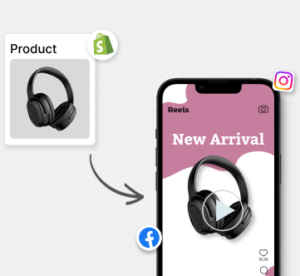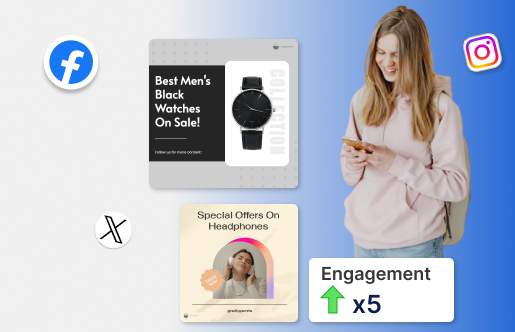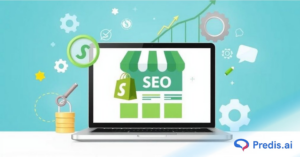Today, the e-commerce arena is highly competitive. Every business wants to expand its reach, drive traffic, generate leads, and ensure maximum conversions. This makes e-commerce CRO (Conversion Rate Optimization) a critical metric for assessing a business’s success.
In today’s digital world, e-commerce is more than just having a website – it’s about optimizing that site for maximum effectiveness. With increasing competition, standing out in the crowded e-commerce landscape requires more than just offering good products. You need to ensure your website turns visitors into customers efficiently. That’s where Conversion Rate Optimization (CRO) comes into play.
E-commerce CRO refers to the strategies and techniques you can use to increase the percentage of visitors who make a purchase on your site. Every click, every second on your website counts, and your goal should be to guide your visitors toward completing a purchase. Improving your conversion rate means increasing your sales without necessarily increasing traffic, which can have a direct impact on your profitability.
In simple words, it means the number of leads that get converted into customers. Your e-commerce conversion rate has a direct impact on its overall revenue growth. It can help measure ROI in e-commerce, offer personalized solutions to your target audience, and empower you to make significant decisions.
By understanding your audience’s behavior, you can make data-driven changes to your website, ultimately improving the customer journey. This may involve tweaking product pages, enhancing the checkout process, or even improving site speed. Optimizing your conversion rate not only boosts revenue but also builds long-term customer loyalty, ensuring that visitors return to shop again. The right CRO strategies can make all the difference between a visitor who leaves and a visitor who becomes a loyal customer.
Considering the essence of monitoring and enhancing your e-commerce conversion rate by following best practices can be incredibly rewarding.
This guide explains the importance of measuring e-commerce average conversion rates and outlining expert e-commerce CRO strategies supported by real-world examples.
What Is an E-Commerce CRO?
Conversion Rate Optimization (CRO) for E-Commerce is tuning of your online store to increase the likelihood of visitors taking the desired actions. These actions include making a purchase, signing up for an email list, or engaging with your brand in other meaningful ways. CRO is about optimizing the customer journey. It requires understanding what motivates or discourages your visitors from converting and removing any barriers they may encounter.
To improve the E-commerce CRO (Conversion Rate Optimization) ideally, your website visitors should complete a desired action, such as:
- Making a purchase
- Filling out a form
- Signing up for a newsletter
- Downloading a resource
- Registering for an event
- Starting a free trial
- Upgrading a subscription, etc.
In an e-commerce business, CRO involves testing different elements on your site, such as product pages, checkout processes, and even the way items are presented. Your goal should be to create a seamless and user-friendly experience that encourages more sales without needing additional traffic. By making the buying process easier and more intuitive, you can turn casual browsers into paying customers. This increases your revenue without spending more on marketing. CRO is a data-driven approach, using tools like heatmaps, A/B testing, and customer feedback to improve user experience on your site.
E-commerce CRO means making crucial improvements to enhance conversion rates using various strategies. Businesses that implement CRO strategies see a 74% increase in sales.
User experience and CRO are interlinked as a better UX leads to higher conversion rates. Online shoppers expect better selection and convenience, which are significant areas for CRO focus. Conversion rate optimization aims to drive specific KPIs, so businesses need to enhance conversion rates across different parts of their e-commerce site. Partnering with a provider of e-commerce development services can help implement UX improvements that directly support CRO goals.
How Is the Conversion Rate Calculated?
Understanding your conversion rate is important to know the performance of your e-commerce business. The conversion rate is a simple yet powerful metric. Conversion rate helps you to understand how efficiently your site is turning visitors into customers or leads.
To calculate your conversion rate, you need two main pieces of information: the number of visitors and the number of conversions (desired actions) during a specific time.
The conversion rate is a vital key performance indicator that quantifies the percentage of users who perform a desired action out of the total number of visitors. The formula for calculating the conversion rate:
Conversion Rate = (Number of Conversions/Total Number of Visitors) × 100
Where:
- The number of Conversions is the number of users who completed the desired action
- The total Number of Visitors is the number of users who visited your site during a specified period.
Example Calculation for Conversion Rate:
If your business website has 10,000 visitors in a month and 500 make a purchase, the conversion rate would be:
Conversion Rate = (500/10,000) × 100 = 5%
This means that 5% of the website’s visitors converted into customers by making a purchase.
A higher conversion rate means more visitors are converting into customers, which typically means increased revenue and business success for your online store.
Steps to Calculate Conversion Rate:
Step 1: Determine the Number of Conversions: Identify the specific action you want users to take; for example, you want to track the number of people who created an account on the website. Use analytics tools to check the number of people who created an account.
Step 2: Identify the Total Number of Visitors: Find out the total number of visitors. Tools like Google Analytics can help you track this data.
Step 3: Apply the Conversion Rate Formula: The formula for the conversion rate is really straightforward. Insert both figures into the given formula and calculate the conversion.
What Is a Good E-Commerce Conversion Rate?
The definition of a “good” conversion rate can vary significantly depending on the industry, product type, and audience of your business. However, e-commerce conversion rates fall between 2% and 5% generally. This means that for every 100 visitors to an online store, around 2 to 5 people will make a purchase. That may seem like a small percentage, but in e-commerce, even slight improvements in conversion rates can lead to substantial revenue gains.
Different industries have different benchmarks for conversion rates. For example, luxury goods or high-ticket items might see lower conversion rates due to the lengthy consideration process involved. While low-cost, impulse-buy items tend to have higher conversion rates. Niche markets may experience above average rates because they target a more focused audience. Whereas general retail sites could have different conversion rates for different categories.
Average e-commerce conversion rates range from 2.5% to 3%. They can vary according to region, with the US average of 2.8%, Europe of 2.2%, and APAC of 1.9%.
Several factors may affect your conversion rates, including:
- User Experience (UX): Is it easy for your customers to navigate your site, find products, and check out? The importance of an experienced web development services provider is evident today, and a smooth and intuitive UX can dramatically boost conversion.
- Website Speed: Slow load times can deter customers from staying on your site, leading to lower conversion rates.
- Mobile Optimization: With more consumers shopping on mobile devices these days. It is important to have a mobile-friendly website is for maintaining and improving conversion rates.
- Product Value Proposition: Writing clear, compelling product descriptions and strong calls to action encourages visitors to make decisions more quickly.
- Trust Signals: Including customer reviews, trust badges, and secure payment options helps build trust and encourage visitors to complete purchases.
While aiming for industry benchmarks is a good starting point, it is important to track your conversion rate regularly and focus on consistent improvement. Even a small percentage increase can lead to a significant boost in revenue and overall business performance.
Use best practices to maintain a conversion rate of more than 3%. This should be the initial goal for your online store. You must implement advanced conversion rate optimization strategies to maintain a high rate.
19 Best E-Commerce CRO Strategies
E-commerce CRO is essential to make the purchasing experience enjoyable and streamlined for your target audience. Following key strategies can encourage visitors to take relevant action that can ultimately lead to business profitability and growth.
Each of these tactic is designed to enhance the customer experience and encourage visitors to take action. Let’s dive into the best practices that can help you convert more visitors into paying customers.
Here are 18 strategies to improve your e-commerce conversion rate:
1. Optimize Your E-commerce Checkout Process
The checkout process is the final step in converting visitors into buyers. A complicated or slow checkout often leads to cart abandonment. According to research, the average cart abandonment rate for e-commerce sites is approximately 70%.
Some of the major reasons why visitors abandon their carts are:
- Lengthy checkout process.
- Lack of multiple payment options
- Hidden fees
- Slow app/website
- Inaccurate information
- Lack of customer care assistance.
Thus, it becomes significantly important to streamline your checkout process to boost conversions. This will help visitors make a purchase.
Start by simplifying the number of steps required to complete a purchase from your site. Allow guest checkout options, so customers don’t feel forced to create an account. Make sure you are asking only the essential information required to complete the transaction. Avoid distractions by keeping the layout clean and focused on completing the purchase.
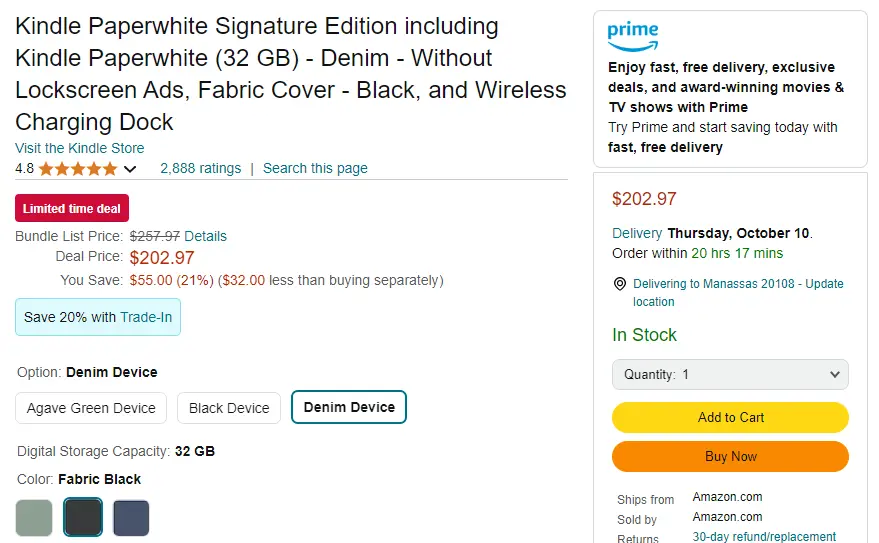
Example: Amazon’s one-click purchasing, saved payment information, and streamlined checkout flow minimize friction and lead to higher conversion rates.
2. Optimize the Website for a Better Mobile Experience and Responsive Design
According to stats 67% of consumers are likely to buy from a website if it is mobile-friendly. Many customers shop on their phones, so your checkout process needs to work smoothly on all devices. A responsive design ensures that your checkout flow is easy to navigate, whether on a smartphone or a tablet.
Many websites are mobile-friendly. It has become imperative to offer a seamless mobile user experience that can make it easier for users to navigate your site on their smartphones. To further enhance this experience, integrating ai code generation can help optimize your site’s functionality and responsiveness.Refine your mobile user experience by considering common mobile pitfalls and avoiding cumbersome navigation.
Make sure buttons are large enough to click, forms are easy to fill out, and payment options are simple to choose. A mobile-optimized checkout can drastically reduce friction and increase conversions for your business. Further, you can offer simplified layouts, incorporate one-click checkout, and use mobile-friendly calls-to-action to enhance the user experience.
In fact, a dedicated team success story often highlights how having a focused group of experts can lead to smoother mobile experiences and measurable improvements.
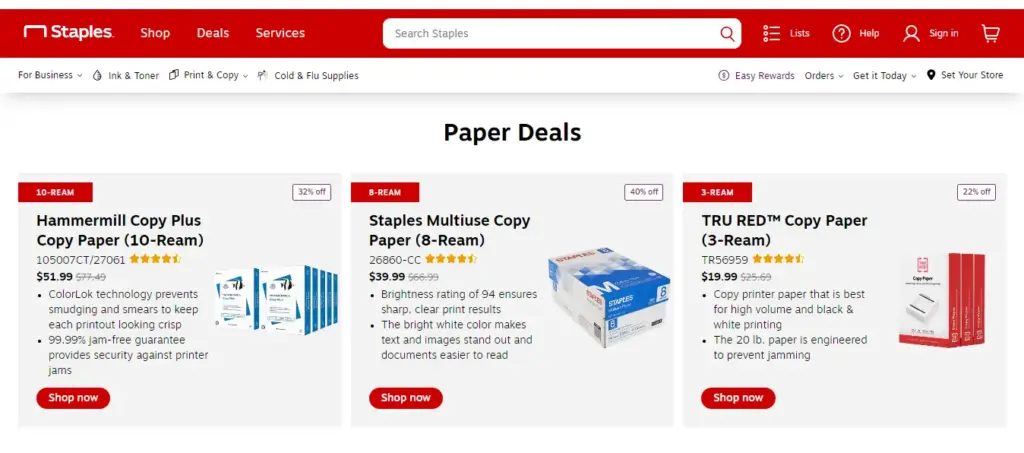
Example: Check out how Staples boosts e-commerce CRO conversion rates by implementing one-click checkouts, mobile wallets, and a perfect mobile load speed.
3. Add Trust Signals
Building trust with your customers is crucial for increasing conversions on your site. People are more likely to buy from a site they trust. Adding trust signals reassures them that they’re making a safe and informed decision. Around 17% of shopping carts are abandoned due to concerns over the security of the site.
Trust signals reassure customers about the security of their transactions. Incorporate SSL certificates and site seals to protect sensitive information such as credit card details and personal data. Moreover, sites with up-to-date SSL certificates may rank higher in search results, which means your website can attract more organic traffic.
Trust seals reflect that your site has been verified for security which can make your visitors more comfortable making purchases.
You can share customer reviews and testimonials. This will provide social proof that other people have bought and enjoyed your product. Display user ratings prominently on product pages to show how others feel about their purchases from you.
Don’t forget to highlight your return policy or money-back guarantee in the customer journey. These will reduce the risk for customers and make them more comfortable completing their orders.
The more trust signals you can show, the more likely customers are to buy from your site. When visitors feel confident about your site, they’re more inclined to move forward with a purchase. Businesses managing vendor relationships can also improve transparency and consistency by integrating RFP automation, which helps standardize how trust-related requirements are communicated to potential service providers.
4. Use High-Quality Images and Videos on Product Pages
The quality of visuals on your product pages can make or break the sale for you. Since customers can’t physically touch the product, they rely on images and videos you have used of your products to make the decisions.
Modern customers rely on visuals to understand the product. High-quality images and videos allow users to see the product from multiple angles and in different contexts. Create authentic and high-quality videos for your website with Predis.ai’s e-commerce video maker progg.
Having strong visuals reduces uncertainty around your products. When customers feel confident about what they’re buying, they’re more likely to complete the purchase. High-quality visuals also make your site look more professional, which adds to the overall trustworthiness of your store.

Example: ASOS uses high-resolution images and detailed videos to help customers visualize products better. This leads to higher conversion rates and reduced return rates.
5. Ask Customers How They Found Your Site
Understanding how visitors arrive at your site is crucial. You can create your content according to audience expectations and learn about their journey to your site. You can use on-site surveys with questions such as:
- How did you hear about our site?
- What’s your main goal for using the specified product?
Responses to such questions can reveal the effectiveness of your marketing efforts.
When you know how customers are finding your site, you can better allocate resources to the marketing channels that work best for your business. Using project cost management software can help ensure that your marketing spend stays within budget while aligning with performance insights from customer feedback.
For example, if a large number of customers are coming from social media, you will need to invest more in social ads. If many are finding you through search engines, it may be time to optimize your SEO strategy.
Asking customers this question can also uncover new opportunities. Maybe they found you through a referral from a blogger or influencer you weren’t aware of before. By tracking where traffic is coming from, you can optimize campaigns, focus your budget on what works, and improve overall conversion rates.
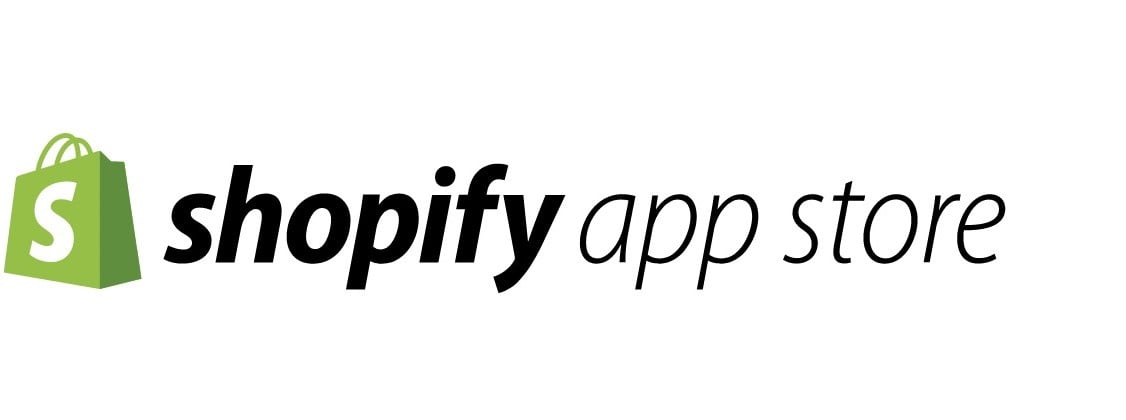
⭐️⭐️⭐️⭐️⭐️
“Great App! Would Recommend to anyone looking to boost their social media posts.”
6. Display Product Reviews
99% of online shoppers look for reviews when making a purchase, and 96% look out for negative reviews to understand drawbacks. Product reviews are crucial for building user confidence and helping the visitors evaluate products. Displaying reviews, testimonials, and ratings for each product can influence purchase decisions.
Product reviews are a powerful tool for building trust with your potential customers. When visitors see positive feedback from others, they feel more confident in their buying decisions. Displaying reviews on product pages gives your customers social proof, which helps reduce any hesitation they might have. Honest reviews provide real insights into the product’s quality and performance.
It’s important to showcase both positive and constructive reviews. This adds authenticity and shows that you value transparency. Encourage customers to leave reviews after their purchase by offering incentives, like a small discount on their next order.
The more reviews you have, the more credible your products appear. A well-reviewed product is more likely to convert hesitant visitors into buyers.
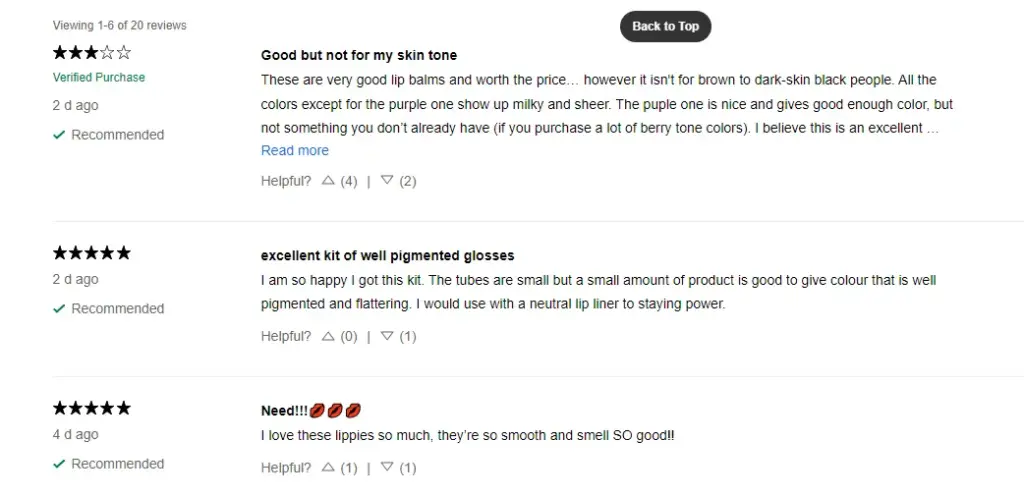
Example: Sephora prominently displays customer reviews and ratings on their product pages. This strategy enhances trust and encourages undecided customers to complete their purchases.
7. Offer Free Shipping
Free shipping has become a standard expectation among online shoppers. Offering free shipping can eliminate a major barrier to purchase and further encourage customers to complete their orders. Today, 50.6% of online shoppers shop because of free shipping, and 48% of online shoppers abandon their carts due to high shipping costs.
You must consider costs before promising free shipping and ensure it is sustainable for the business. This is where a procurement management tool proves useful, providing clear insight into costs and streamlining supplier coordination, making free shipping a more viable option.
Even if you can’t offer free shipping on all orders, consider providing it for orders over a certain amount. This strategy boosts conversions and can also increase the average order value. Highlight your free shipping offer clearly on product pages and throughout the checkout process. Customers are more likely to make a purchase when they know they won’t be surprised by extra fees at checkout.
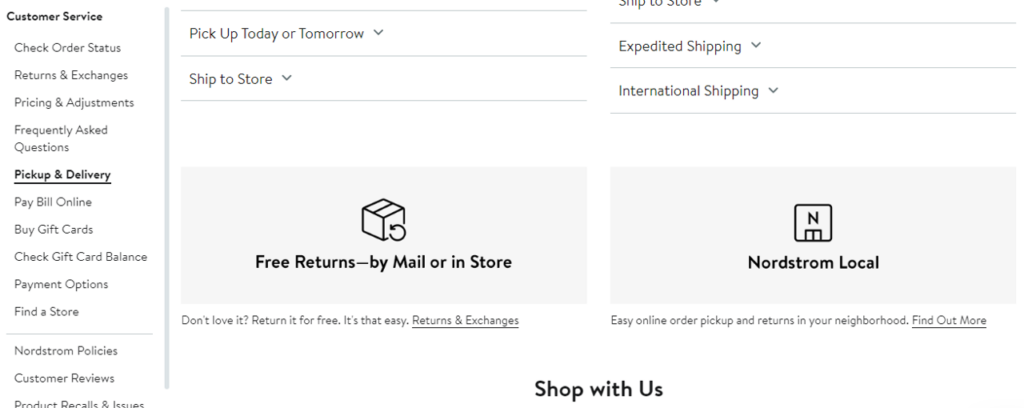
Example: Nordstrom provides free shipping and free returns on all orders. This strategy reduces purchase hesitation and leads to higher conversion rates.
8. Provide Discount Deals and Coupon Codes
Offering discounts and coupon codes is a simple yet effective way to encourage purchases on your site. Customers love getting a good deal, and a small discount can often be the final nudge they need to complete their order.
E-commerce stores that offer limited-time coupons or discount deals can create a sense of urgency. This strategy prompts shoppers to make quicker purchase decisions. You can also set an expiration date on these codes to drive more sales.
You can use coupon codes for first-time buyers or seasonal promotions to attract new customers and boost sales during slow periods. Make sure your discount offers are easy to find and apply at checkout. A well-timed discount can increase conversions and build long-term customer loyalty.
You can further send personalized discount codes to your email subscribers or offer exclusive discounts to repeat customers. Use social media platforms to share discount codes and promote special offers or run contests where participants can win special deals. Integrate channels and create valuable content for all platforms using Predis.ai’s e-commerce store social media tool.
9. Observe Customer Behavior to Improve User Experience
Understanding how your customers interact with your website is crucial for improving their experience on your site. Tools like heatmaps, session recordings, and Google Analytics give you detailed insights into customer behavior. By observing where users click, scroll, and spend the most time on your site. You can identify and eliminate any obstacles they face during their shopping journey.
You must pay heed to how customers interact with your site. Check where visitors are coming from, which pages they visit, and where they drop off. Collect direct feedback from users about their experience. This will bridge the gap between expectations and reality and enhance user experience.
For instance, you may notice that users abandon their cart at a certain stage of the checkout process. This could be a signal of confusion or frustration with the transaction process. If you’re using a web hosting shopping cart, it’s crucial to address these pain points, such as simplifying checkout steps or reducing load times. Improving these areas can make the experience smoother and significantly increase the likelihood of conversions.
Also, analyze how customers search for products or navigate categories. If they are struggling to find items, consider improving search functionality or reorganizing your site’s layout. Regularly reviewing customer behavior helps you to make informed decisions. This can be used to enhance the user experience.
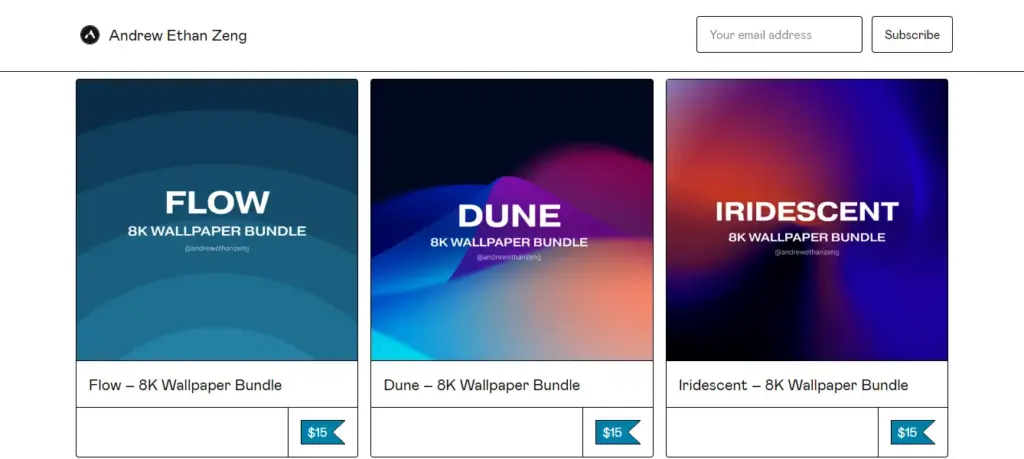
Example: Shopify store owner Andrew Ethan Zeng discovered that many visitors tried to click on a non-clickable sales banner. After making the banner clickable, conversions surged, leading to hundreds of additional orders.
10. Ensure Easy Navigation
Easy navigation is essential for building a successful e-commerce site. If customers can quickly find what they’re looking for, they are more likely to make the purchase. Complicated menus or unclear categories can frustrate visitors and lead to higher bounce rates. Make sure your website is structured in a way that is intuitive and easy to understand.
You can start by organizing products into clear categories and subcategories. Use simple, descriptive labels that make sense to your audience. A well-designed navigation bar should be visible at the top of the page, allowing customers to browse effortlessly on your site. Additionally, incorporate a search bar with filters so users can narrow down results based on their preferences.
Customers expect intuitive website navigation that helps them find what they need with minimal effort. Make sure you help users see all available items and ensure product categories are visible on both desktop and mobile.
60% of consumers start their research on a search engine. You must simplify the menu structure, use a streamlined search function, and ensure faster loading times. In the end, ensuring easy navigation reduces friction and helps customers find products quickly, improving both user satisfaction and conversion rates of your store.
11. Offer a Live Chat Feature
Providing a live chat feature for your visitors can enhance the user experience on your site. However, it’s important to consider how and when this feature is used. Unsolicited live chat pop-ups can be perceived as intrusive, but they are highly valued when customers need immediate services. Live chat support offers instant support, real-time interaction, and quick resolution of issues.
A live chat feature provides immediate customer support without users having to leave the site. It reduces the chances of cart abandonment by addressing concerns on the spot for your customers. Whether it’s a question about product specifications, shipping details, or return policies, a live chat agent can offer solutions quickly and effectively.
Additionally, live chat can be used to upsell or suggest related products. Chatbots can be used to handle common queries when agents are unavailable, ensuring that customer inquiries are always addressed on time. However, it is important to have a human backup available for more complex issues. A call center can provide this support by managing an efficient call flow to ensure reliable and seamless customer assistance.
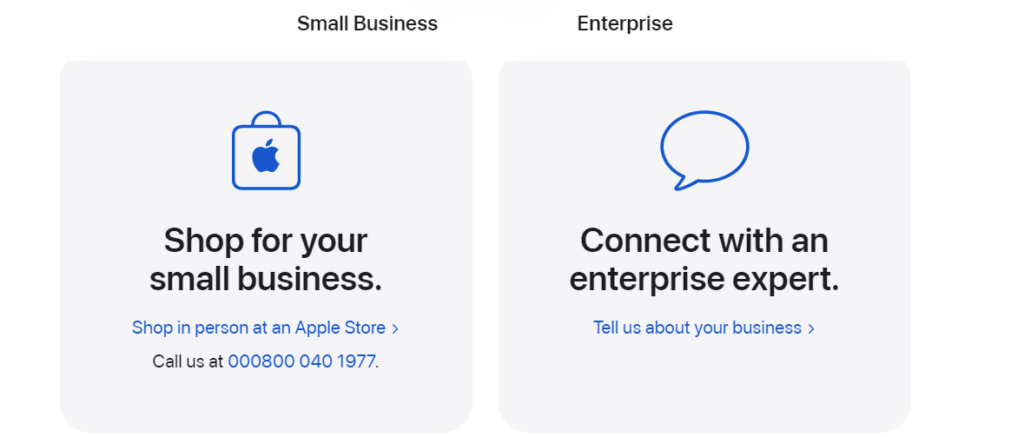
Example: Apple provides an integrated live chat feature to assist customers in real-time during their shopping experience.
12. Ensure That Autocomplete Fields Are Updated Correctly
Autocomplete fields play a crucial role in improving user experience, especially in filling forms and search bars. When implemented correctly, they save time and reduce errors by suggesting options as the user types. However, if autocomplete fields are outdated or inaccurate, they can frustrate users and lead to abandoned searches or forms.
Even though the user misspelled the item they are looking for, brands should still offer the right suggestions. Make sure your autocomplete suggestions are always updated. This means regularly reviewing and refining the data behind the suggestions.
Poorly performing autocomplete fields can confuse users and bring your conversions down. Thus, it is important to optimize your autocomplete suggestions and make sure misspelled queries don’t cause users to abandon the site.
Fast, relevant autocomplete suggestions help users find what they need quickly and enhance the overall shopping experience.

Example: Wayfair offers the right product suggestions despite the customer entering misspelled information.
13. Create High-Quality Content
You can regularly publish engaging content in the form of articles and blog posts related to your products. Focus on solving common customer problems. Brands with active blogs generate more leads per month compared to those without blogs. Well-written content helps in informing and educating customers, making them more confident in their buying decisions.
You can create detailed product guides and how-to articles that help customers with step-by-step instructions. Add high-quality images, videos, and user-generated content to your blogs or social media posts to boost engagement.
Further, encourage customers to share their experiences and highlight this content on your website and social media channels. Provide free resources such as eBooks and engaging video content that are relevant to your audience.
Blog posts and articles that cover industry trends or product tips can help drive traffic and establish your brand as an authority. Always aim for content that’s informative, easy to read, and SEO-optimized. This will help you in improving your search engine rankings, driving more organic traffic to your site.
In the end, high-quality content builds trust and keeps customers engaged with your brand. It’s an investment that pays off in the form of higher conversions and customer loyalty.
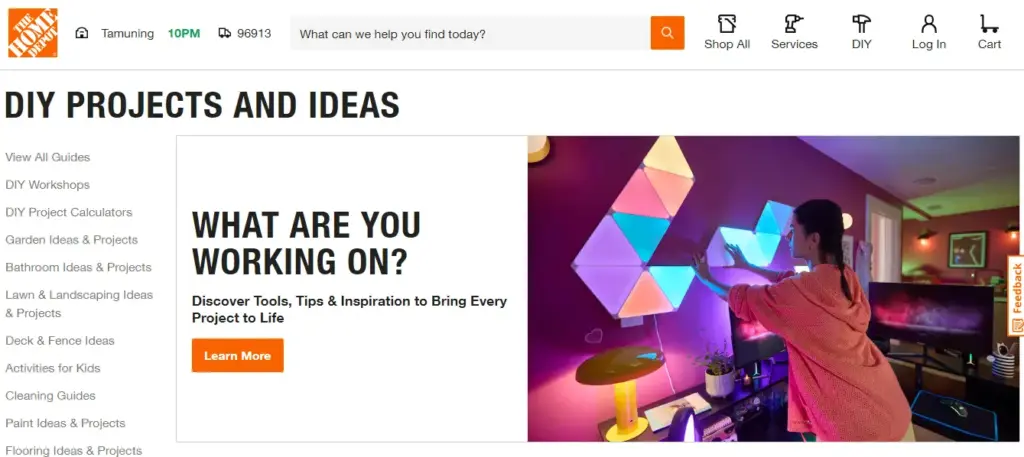
Example: The Home Depot is a great example of providing value through content to your customers. The Home Depot regularly posts blogs on topics such as DIY projects and tips and tools for home makeovers.
14. Offer an Omnichannel Experience
Improve user experience by allowing customers to switch between channels without friction. You must make sure that inventory, customer data, and order management systems are integrated across all channels.
This includes syncing inventory, customer preferences, and order history across platforms. By doing this, you provide a more personalized and consistent experience that meets customers’ expectations. For those in the restaurant business, implementing a restaurant online ordering system can unify orders from multiple channels, creating a seamless experience for both customers and staff.
For instance, a customer might browse products on your mobile app, add items to their cart, and later want to complete the purchase on your desktop site. They may also want to check product availability at a nearby store or get updates via email or SMS. Your site should allow this flexibility without losing data or causing confusion.
Provide customer support across all channels. The objective is to offer your audience a consistent experience, whether they are shopping on a mobile app, website, or in a physical store. A cloud contact center can help unify these touchpoints, ensuring seamless communication and faster resolution regardless of the channel used.
Omnichannel experiences help in building stronger relationships with customers, as they feel connected to your brand across all touchpoints. It helps increase your brand’s engagement, customer satisfaction, and ultimately, sales.
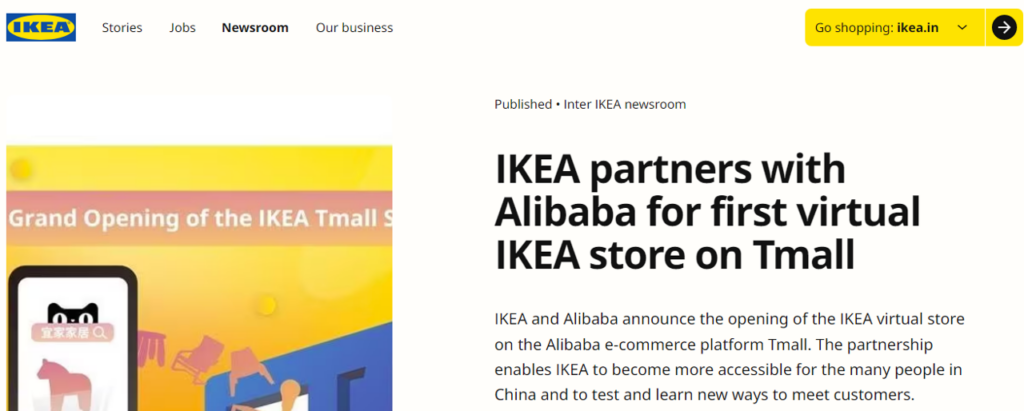
Example: Ikea’s omnichannel strategy integrates in-store and online shopping experiences. It uses augmented reality to help customers visualize products in their homes. The brand also offers flexible delivery and pickup options. This approach enhances customer convenience, leading to higher conversion rates.
15. Allow Customers to Checkout As Guests
One of the biggest causes of cart abandonment is forcing customers to create an account before they can complete their purchase. Offering a guest checkout option helps in reducing this friction. Many customers, especially first-time buyers, want a quick and easy shopping experience. Forcing them to register adds an unnecessary step and can lead to frustration, causing them to abandon their cart.
Allowing customers to checkout as guests can improve e-commerce conversion rates. You can start by streamlining the checkout process by minimizing the number of steps and fields required. Customers can still provide essential information like shipping and payment details without the hassle of setting up an account.
Do not force customers to create an account before making a purchase. To reduce barriers to purchase, offer the option to checkout as a guest. Make the guest checkout option prominent and easy to select, and label it during the checkout process.
After the purchase is complete, offer customers the option to create an account using the information they provided during the checkout. This allows customers to save their details for future purchases without interrupting the current transaction.
Boost Sales on Social Media with AI ⚡️
TRY NOW16. Maintain Competitive Pricing
Offering competitive pricing is crucial in today’s e-commerce landscape. Customers can easily compare prices across different websites, and they often choose the store that offers the best deal. If your prices are too high, you risk losing sales to your competitors. Maintaining competitive pricing ensures that customers feel they are getting good value for their money.
You need to price your products at or below the average market price. Adjust prices regularly based on market trends and consumer response. High-quality marketing can justify higher prices.
You don’t always have to be the cheapest, but your pricing should reflect the quality and value of your products. Offering special promotions, bundle deals, or loyalty discounts can also give you an edge without compromising your profit margins.
You must implement a price-matching policy to reassure customers that they are getting the best deal. You can also consider using penetration pricing, setting low prices in the beginning, and slowly increasing them as your market share grows.
Using dynamic pricing strategies based on demand, seasonality, or customer behavior can also help you stay competitive. Competitive pricing helps build customer trust and encourages repeat business. Shoppers who feel they’re getting a fair deal are more likely to return.
17. Ensure that Visitors see Call-to-Action Buttons
Call-to-action (CTA) is important to improve your conversion rates. As call-to-action (CTA) buttons are essential for guiding visitors to take the next step, whether it’s making a purchase, signing up for a newsletter, or learning more about a product. If your CTAs are not easy to find, visitors may leave your site without completing an action.
Place CTA buttons where they are easily visible and accessible. Make sure that CTA buttons stand out by using contrasting colors and are formed using concise language. Ensure your CTA buttons are prominently placed on key pages like product listings and the checkout process.
Optimize CTA buttons for mobile devices, ensuring that they are visible and easy to click on smaller screens. Regularly conduct A/B testing to determine which CTA designs and texts perform best. By making your CTAs visible and compelling, you can guide more visitors toward completing actions that benefit your business.
18. Use Compelling Product Descriptions
Conversion rate optimization often needs attractive product descriptions to set your brand apart from competitors. Your unique selling proposition should explain why customers should choose you over others. Use humor, intelligence, and a unique approach when creating authentic product descriptions.
Product descriptions should be detailed yet concise. They should provide all necessary information and include details such as materials, dimensions, and compatibility. Avoid overly technical language unless it’s necessary for understanding your product. Include keywords to improve your search engine optimization (SEO) and attract more traffic to your site.
Additionally, you can combine compelling text with high-quality images or videos can further enhance the shopping experience. Use Predis.ai’s e-commerce video maker that offers easy, customizable, and user-friendly ways to create top-quality visuals.
Good product descriptions reduce uncertainty, build trust, and increase conversions by giving customers the confidence they need to make a purchase.
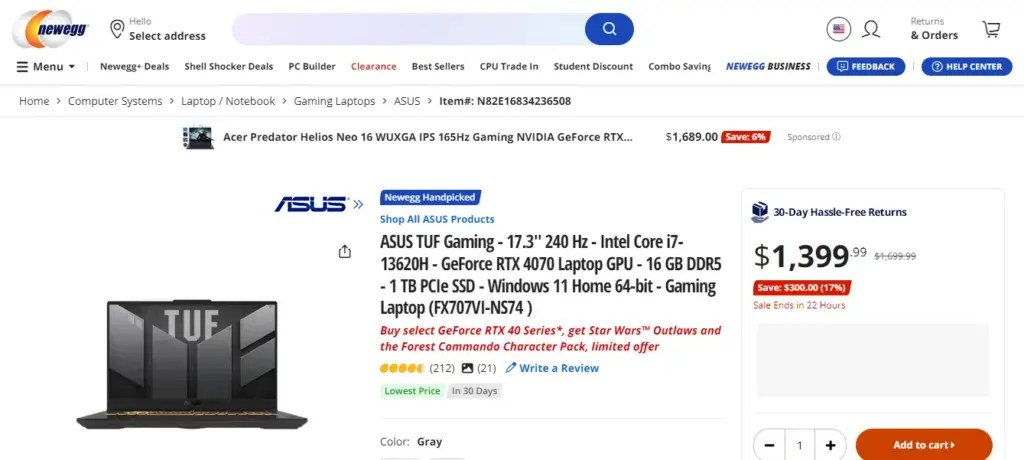
Example: Newegg effectively uses the comprehensive product description strategy by detailing product specifications and using comparison tools. The brand further uses high-quality images and videos along with descriptions.
19. Streamline Mobile Payments
With the rise of mobile shopping, it is now crucial to offer a smooth and secure mobile payment experience. Mobile users expect a quick and easy checkout process that works seamlessly even on smaller screens.
You must optimize the payment process for mobile users is critical, as many customers shop on their phones. Ensure your mobile checkout process is straightforward and offers multiple payment options without overwhelming the user.
Security should also be a top priority for you on mobile payments. Displaying trust badges and using encrypted payment gateways can reassure customers that their information is safe. Consider reviewing best practices and examples from other companies to refine your mobile payment experience.
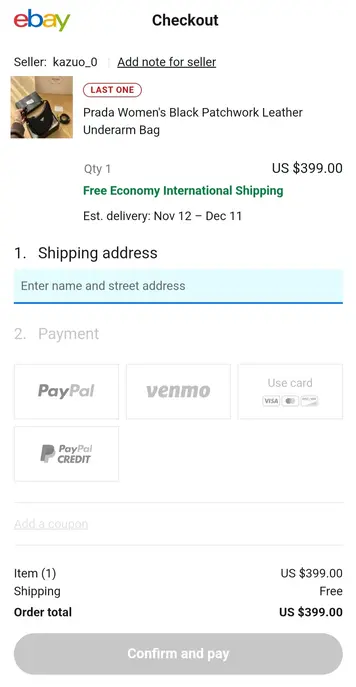
Example: eBay allows its website visitors on mobile devices to select different payment options like PayPal, cards, and credits. This ensures that carts are not abandoned due to limited payment options.
Tools to Improve CRO for eCommerce
Optimizing conversion rates for eCommerce requires a strategic approach, and leveraging the right tools can make all the difference for your business. Among those tools is an email signature generator, which lets you deploy professional, consistent signatures across your team, turning every email into a subtle conversion‑opportunity and reinforcing your brand identity. These tools help you understand customer behavior, test changes, and gather feedback to improve your website’s performance. Besides CRO and analytics tools, sales prospecting software helps e-commerce brands find qualified leads and drive targeted sales. Let’s dive into five essential tools that can significantly boost your e-commerce Conversion Rate Optimization (CRO) efforts.
1. Google Analytics
Google Analytics is a foundational tool for anyone serious about improving CRO in eCommerce. It provides in-depth insights into your visitors’ behavior, allowing you to track everything from traffic sources to user interactions on your website. For eCommerce specifically, Google Analytics can be set up to monitor key actions such as product views, cart additions, and completed purchases.
One of the most valuable features is the ability to track the entire customer journey. You can see where visitors come from – whether it’s organic search, paid ads, or social media – and how they move through your site. If there’s a specific point where a significant number of visitors drop off, you’ll know exactly where to focus your optimization efforts.
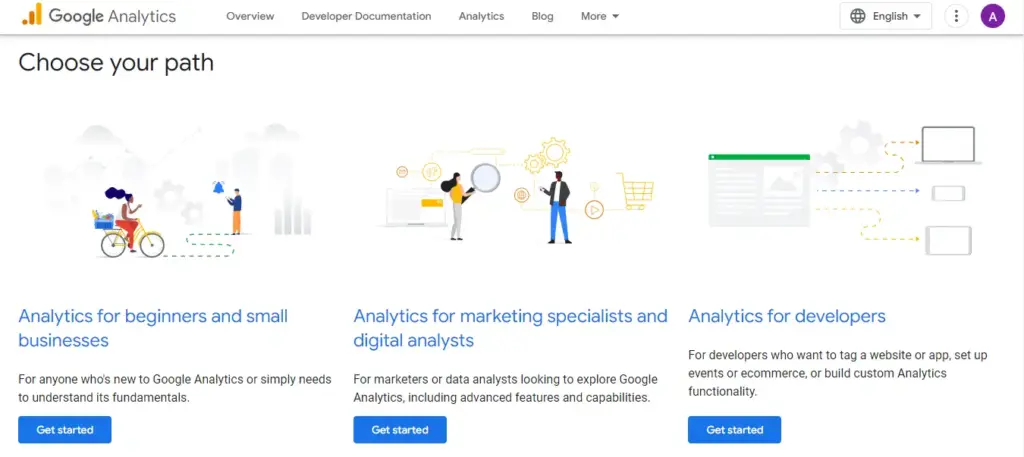
Google Analytics also provides detailed reports on metrics like bounce rate, average session duration, and conversion rates by traffic source. These insights help you understand how well different marketing channels are performing and which areas of your website may need improvement.
Another powerful feature is the ability to set up goals and funnels. For example, you can create a funnel to track the steps users take from adding an item to their cart to completing the purchase. If a large number of users are abandoning their carts, Google Analytics helps you pinpoint where they might be encountering issues, allowing you to optimize your checkout process. Overall, Google Analytics is a must-have tool for any eCommerce business looking to improve its CRO.
2. VWO (Visual Website Optimizer)
VWO is a leading A/B testing and experimentation platform that helps you improve your website’s performance through data-driven decisions. A/B testing allows you to test different versions of your site to see which performs better, whether it’s testing new headlines, button colors, or page layouts. For eCommerce businesses, this can make a significant impact on conversion rates.
What sets VWO apart is its user-friendly interface and powerful features. It provides not just A/B testing but also multivariate testing, heatmaps, and session recordings. Heatmaps visually show you where users are clicking, scrolling, and spending time, giving you insights into how visitors engage with your site. Session recordings allow you to watch real-time user behavior, which can reveal pain points or friction areas that you might not have otherwise noticed.
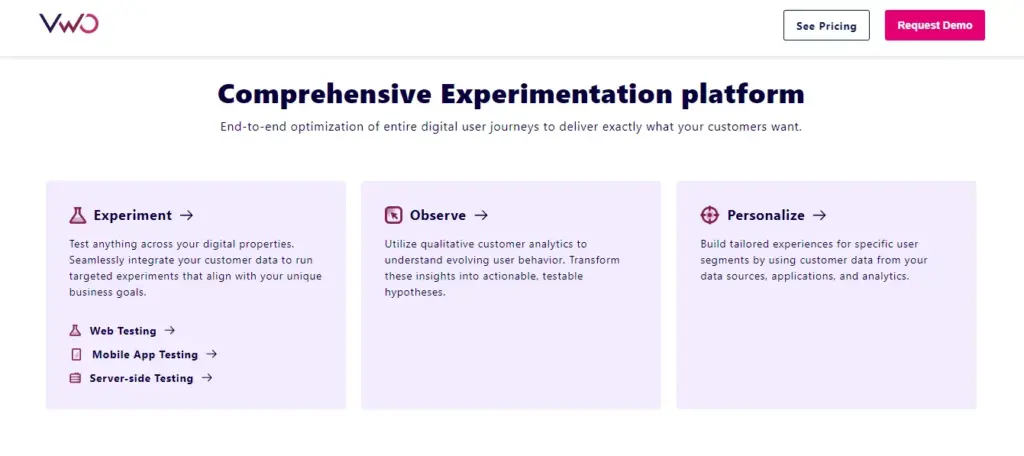
One of VWO’s standout features is its segmentation capabilities. You can run tests based on specific visitor segments – like first-time visitors, returning customers, or users from certain geographic locations. This allows you to tailor your optimization strategies to different customer groups, ensuring a more personalized and effective approach.
VWO’s combination of A/B testing, heatmaps, and session recordings gives you a complete picture of how users interact with your site. By continuously testing and optimizing, you can make informed changes that improve user experience and drive higher conversion rates.
3. OptiMonk
OptiMonk is a conversion optimization tool focused on personalized messaging and reducing cart abandonment. It specializes in creating targeted pop-ups and messages that engage visitors at critical moments, such as when they are about to leave your site without completing a purchase. These exit-intent pop-ups can offer discounts, free shipping, or personalized product recommendations to entice customers to complete their transactions.
The key strength of OptiMonk lies in its ability to segment visitors based on behavior and intent. For example, you can create different messages for first-time visitors, repeat customers, or visitors who have abandoned their cart. This level of personalization ensures that your pop-ups are relevant and helpful, rather than intrusive.
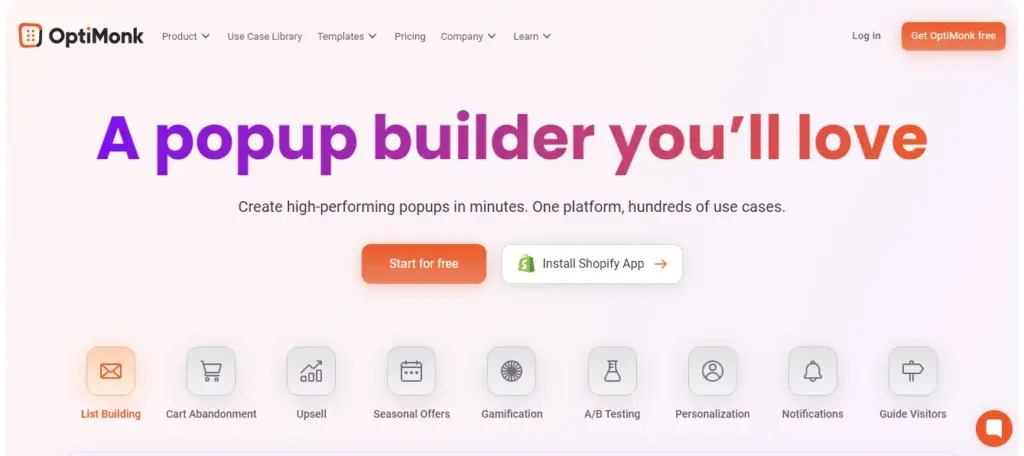
OptiMonk also integrates seamlessly with most eCommerce platforms, making it easy to implement and manage your campaigns. Its drag-and-drop editor allows you to create professional-looking pop-ups without any coding knowledge. You can also A/B test different pop-ups to see which messages or offers resonate best with your audience.
By capturing the attention of hesitant shoppers at the right time, OptiMonk helps reduce cart abandonment and increase conversions. It’s a powerful tool for re-engaging visitors who might otherwise leave your site without making a purchase.
4. SurveyMonkey
SurveyMonkey is an essential tool for gathering customer feedback, which is a critical component of any CRO strategy. Understanding your customers’ needs, preferences, and pain points allows you to make informed changes that improve their experience on your site. SurveyMonkey enables you to create and distribute surveys that gather valuable insights directly from your customers.
One of the best ways to use SurveyMonkey for eCommerce is by sending post-purchase surveys. After a customer completes a transaction, you can ask them about their experience – whether it was smooth, if they encountered any issues, or if they have suggestions for improvement. This feedback can help you identify potential problems in your checkout process, product pages, or overall user experience.
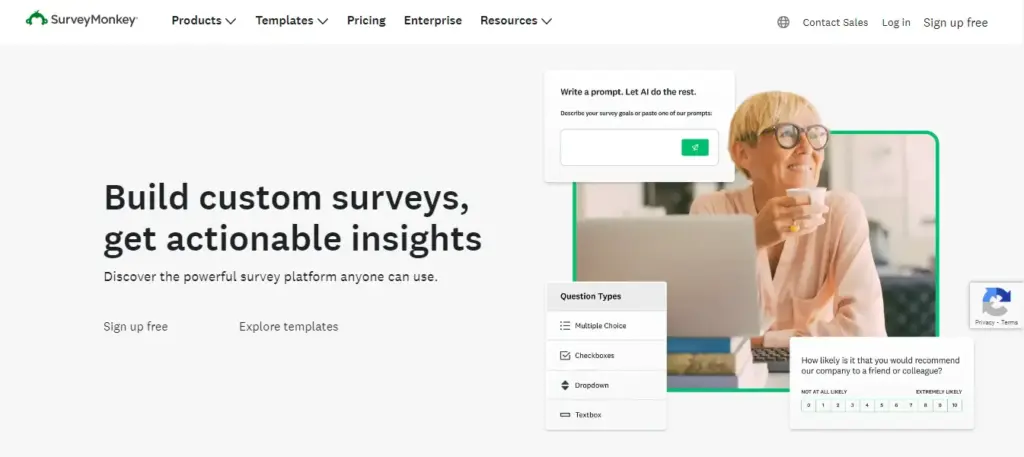
You can also use SurveyMonkey to understand why customers who visit your site do not convert. By sending exit surveys to visitors who abandoned their cart or left the site without making a purchase, you can gather insights into what might be preventing them from completing their order. This information is invaluable for making adjustments that lead to higher conversions.
SurveyMonkey’s flexibility and ease of use make it a great tool for staying connected with your customers and continuously improving your eCommerce site.
5. HubSpot
HubSpot is an all-in-one marketing, sales, and customer service platform that can significantly enhance your CRO efforts. For eCommerce businesses, HubSpot offers tools for creating optimized landing pages, running personalized email marketing campaigns, and tracking customer interactions across multiple touchpoints. This holistic approach ensures that your customers have a seamless experience, whether they’re engaging with your brand through email, social media, or your website.
HubSpot’s CRM( Customer relationship management) is particularly valuable for CRO because it allows you to track customer behavior and interactions in real time. This data enables you to create personalized experiences for each visitor, increasing the likelihood of conversion. For example, you can send targeted emails based on a visitor’s past purchases or browsing behavior, offering relevant products or promotions.
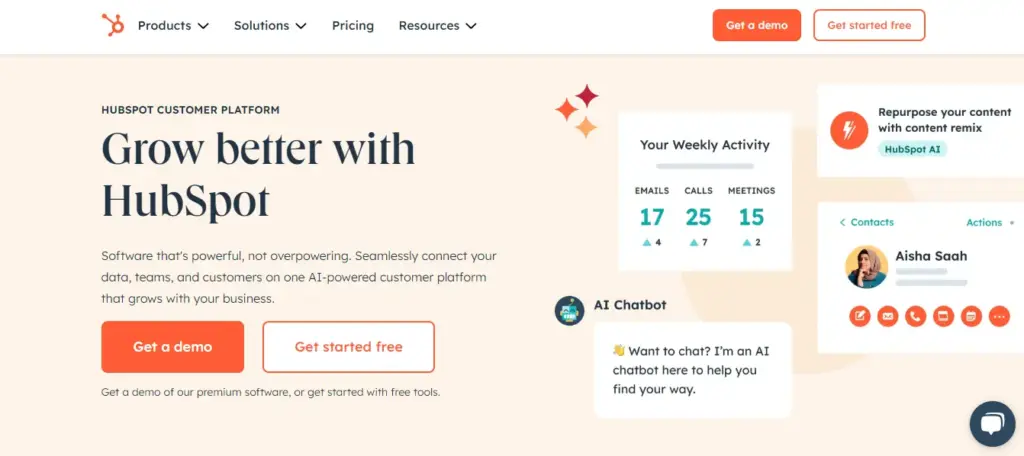
HubSpot also includes built-in A/B testing for landing pages and emails, making it easy to experiment with different designs, headlines, or offers. By continuously optimizing each element of the customer journey, you can improve conversion rates and create a more engaging user experience.
In addition to its marketing and sales tools, HubSpot’s customer service features, like live chat and help desk support, ensure that customers receive assistance when they need it. This level of support can help reduce friction and prevent potential customers from leaving your site without converting.
6. Microsoft Clarity
Microsoft Clarity is a free tool that provides in-depth insights into how users interact with your website. It offers features like session recordings, heatmaps, and user journey analytics to help you visualize customer behavior. One of its standout features is its ability to track “rage clicks,” where users repeatedly click on an element that isn’t responding as expected. These insights help you identify areas where your website may be causing frustration.
Session recordings allow you to watch how individual users navigate your site, helping you understand where they struggle or get stuck. This data is invaluable for identifying issues that may not be immediately apparent through other analytics tools. For example, you may notice that users frequently abandon their carts after failing to find the checkout button. With this information, you can make targeted changes to improve the user experience.
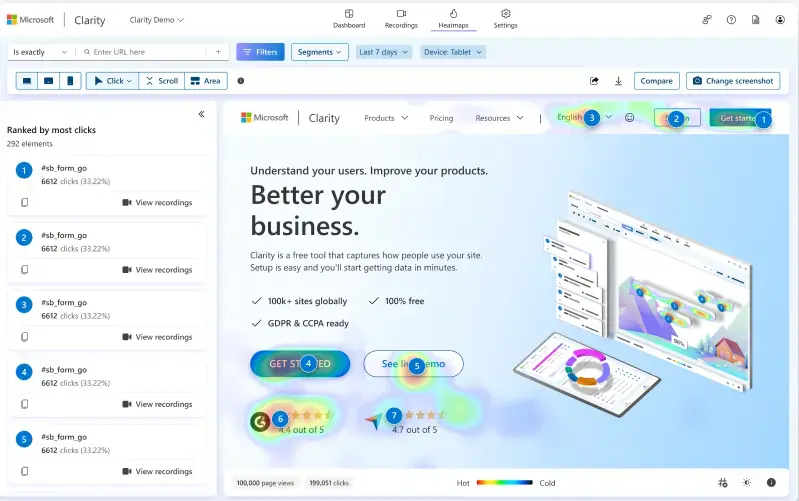
Clarity also offers detailed heatmaps, showing which areas of your pages get the most attention. This helps you understand how visitors engage with your content and where you might need to make adjustments to drive conversions. Microsoft Clarity is a powerful, easy-to-use tool that can significantly enhance your CRO efforts.
These tools provide essential insights, testing capabilities, and customer feedback, helping eCommerce businesses optimize their websites and improve conversion rates. By using these tools effectively, you can create a better user experience, reduce cart abandonment, and turn more visitors into paying customers.
Common E-Commerce CRO Mistakes and How to Avoid Them
When it comes to improving your e-commerce conversion rate, there are some common pitfalls that can hurt your progress. Conversion Rate Optimization (CRO) is a delicate balance of testing, analyzing, and refining your website. Avoid these three mistakes to make sure that you are following e-commerce CRO strategies productively:
1. Testing Without a Structured Plan
One of the biggest mistakes businesses make is running tests without a clear plan. Randomly changing elements on your site without a solid hypothesis can lead to confusion and unreliable data.
For the best results, you must create a roadmap for e-commerce CRO testing. It is not wise to test during holidays, as shoppers spend more time surfing through sites. The results could be skewed. Without a structured plan, it will be hard to measure success or know which changes are truly improving your conversion rate.
To avoid this, you can create a clear testing plan. Start by identifying the specific problem areas on your site and set measurable goals for each test. Run one test at a time and track the results carefully. A structured plan will ensure that each test is purposeful and leads to actionable insights.
Solution: Plan in advance, manage timelines, and monitor progress. Maintain a consistent schedule to perform e-commerce CRO tests to get meaningful results.
2. Making Too Many Design Changes
Another common mistake is making too many design changes at once. Changing multiple elements at the same time – such as colors, fonts, and layouts – makes it hard to pinpoint which change had an impact.
Optimize your site is the need of the hour. But making too many changes can confuse visitors. Your audience can find it difficult to identify specific elements that drive e-commerce performance.
To avoid this, make incremental changes and test them one by one. Start with small design tweaks like button colors or font sizes. Track the performance of each individual change to see what works best.
Solution: Implement small changes and understand the impact of each change by running individual tests. Avoid dramatic design transformations unless you are rebranding. This will help you maintain customer loyalty and brand recognition.
3. Neglecting Your Audience
One major CRO mistake is ignoring your audience’s needs and preferences. Many businesses focus too much on design or features they like, rather than what their customers want. If you don’t take the time to understand your audience, you risk losing them.
To avoid this, always keep your audience in mind when making changes. Use data and customer feedback to guide your decisions. Understand who your customers are, what they’re looking for, and how they interact with your site.
To drive conversions, you must create urgency. One of the most critical factors is building trust with your audience. By aligning your optimization efforts with customer expectations, you’ll see better results.
Solutions: Display reviews to show that others have purchased. Use high-resolution images, include shipping costs, and offer various payment methods.
Never forget that any e-commerce CRO numbers are curated to enhance user experience and increase demand. Engage with your customers and keep their needs at the forefront of your CRO efforts.
Boost Sales on Social Media with AI ⚡️
TRY NOWConclusion
As the e-commerce landscape continues to evolve, businesses are forced to focus more on optimizing their websites for higher conversion rates. CRO tools and services are becoming indispensable in achieving this goal. The statistics speak for themselves: with businesses spending approximately $2,000 per month on e-commerce CRO tools and services, it’s clear that enhancing conversion rates is a top priority.
Additionally, as the global e-commerce market grows, so does the need for businesses to stay competitive in eCommerce landscape. The global e-commerce CRO market is expected to grow at a CAGR of 10%, reaching $1.93 billion by 2026. This growth emphasizes the importance of having a well-optimized website that delivers a seamless shopping experience to your customers.
Millions of consumers are shopping online, which depicts the relevance of e-commerce in retail. It becomes imperative to have an optimized website that can help you augment your e-commerce conversion rate. A high CRO rate directly encourages customers to purchase your products.
By following expert guidance and the strategies mentioned above, you can make incremental changes and build audience trust. You can consider Predis.ai, where professional expertise and trending tools and resources can accelerate your optimization efforts. Sign up today to start your journey!



